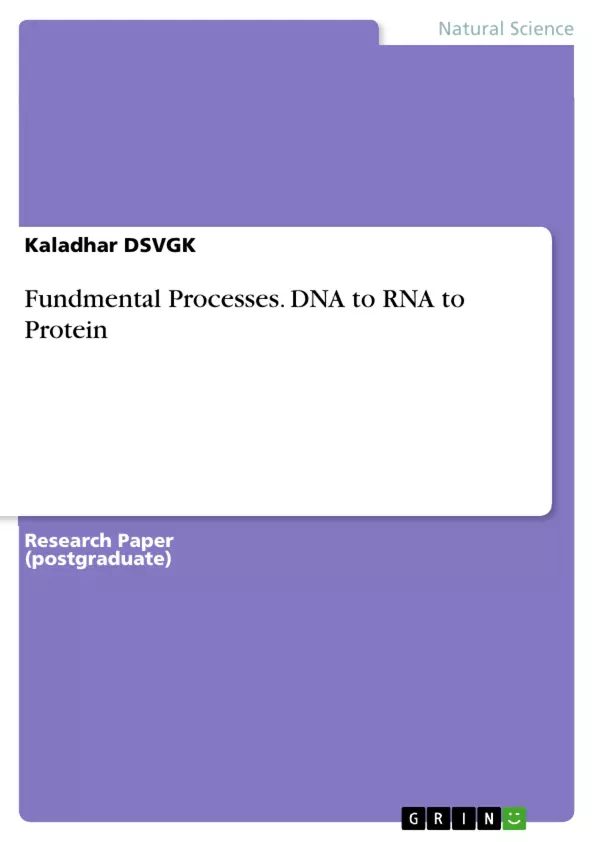The biological living systems contain large number of fundamental processes that control the system. The components present in the system are interlinked and forms network of interactions. The molecules in the systems perform functional relationships that process the mechanisms based on the structural and functional aspects.
Inhaltsverzeichnis (Table of Contents)
- Chapter 1 Biological process
- Chapter 2 DNA replication
- Chapter 3 Transcription
- Chapter 4 RNA processing/Splicing
- Chapter 5 Translation
Zielsetzung und Themenschwerpunkte (Objectives and Key Themes)
This text aims to provide an understanding of the fundamental processes that govern biological living systems. It explores how these processes are interconnected, forming networks of interactions at the molecular level.- Genome organization and its relationship with species characteristics
- The role of DNA in biological systems
- Key processes in gene expression, including DNA replication, transcription, RNA processing, and translation
- The structure and function of eukaryotic chromosomes
- The influence of histone modifications on chromosome structure and gene expression
Zusammenfassung der Kapitel (Chapter Summaries)
Chapter 1 Biological process
This chapter introduces the concept of biological processes as interconnected networks of interactions within living systems. The chapter discusses the genome organization, highlighting the c-value paradox, and explores the differences in gene size between prokaryotes and eukaryotes. It provides an overview of the structure and function of nucleosomes, the fundamental units of chromosome organization, and the role of histone proteins in regulating chromosome structure.Chapter 2 DNA replication
This chapter delves into the process of DNA replication, the fundamental mechanism for copying genetic information. It likely explores the different stages of replication, including initiation, elongation, and termination. The chapter may also cover important enzymes involved in the process and the mechanisms of error correction.Chapter 3 Transcription
This chapter focuses on transcription, the process of copying genetic information from DNA into RNA. It may discuss the different types of RNA, including mRNA, tRNA, and rRNA, and the role of RNA polymerase in the process. The chapter could also cover key elements involved in transcription, such as promoters and enhancers.Chapter 4 RNA processing/Splicing
This chapter examines the various processes that occur after transcription, including RNA processing and splicing. It may explore the role of introns and exons, the mechanism of splicing, and the significance of alternative splicing in regulating gene expression.Chapter 5 Translation
This chapter focuses on translation, the process of converting genetic information encoded in mRNA into proteins. It will likely cover the key components involved in translation, including ribosomes, tRNA, and amino acids. The chapter may also discuss the steps of translation, including initiation, elongation, and termination.Schlüsselwörter (Keywords)
The key focus of this text is on the fundamental processes in biological systems, particularly those related to gene expression and genome organization. This includes topics like DNA replication, transcription, RNA processing, translation, and the structure and function of eukaryotic chromosomes. Key terms include DNA, RNA, proteins, nucleosomes, histones, genome, chromosomes, and gene expression.
Ende der Leseprobe aus 48 Seiten
- nach oben
- Arbeit zitieren
- Dr. Kaladhar DSVGK (Autor:in), 2014, Fundmental Processes. DNA to RNA to Protein, München, GRIN Verlag, https://www.hausarbeiten.de/document/280193
Blick ins Buch


